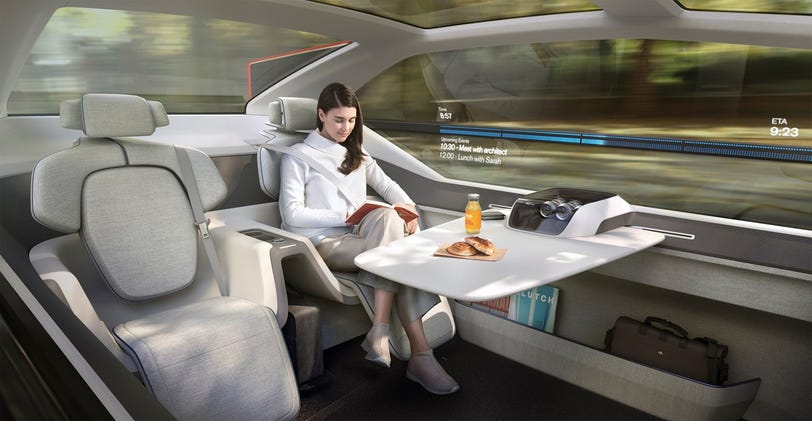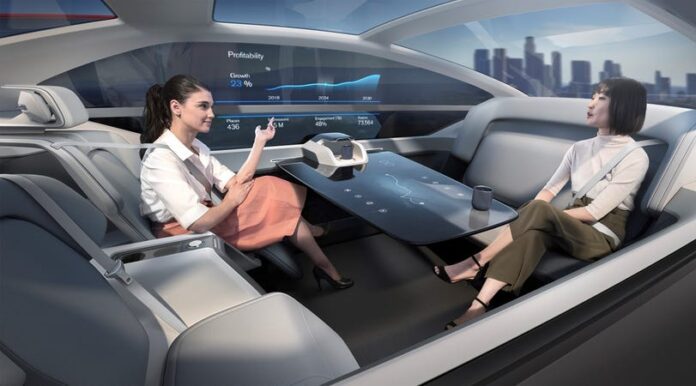When you slide into the car of the future, you may feel like you’ve already reached your destination. You’ll sit at tables, under ambient lighting, getting help from voice assistants as you stretch out your legs in reclining seats. And that’s appealing to many Americans who already know they want to sleep, send emails or play video games as they zip down the road in a car that operates itself.
With self-driving vehicles on the horizon, automakers are rethinking what the future of car interiors will look like. And because these completely autonomous cars, called Level 5 vehicles, will free drivers from focusing on the highway, companies are now free to experiment. And that means premium cars could be loaded with tech that makes workers’ commutes more posh, passive and personalized than ever before. Picture a pod hotel room – on wheels. Automakers like BMW, Nissan and General Motors, for example, have shown off prototype vehicles with onboard voice assistants, smart temperature controls and modular seating, suggesting there will be little difference between your car interior and your smart home. “It’s fair to say that living room environments, very personal home environments and boutique hotels are inspiring (us) when we design the interior of the car in the future,” says Holger Hampf, president of BMW Group’s Designworks.

A study shows that Americans are willing to pay more to let their cars drive themselves. Fully autonomous vehicles aren’t on the roads yet, but some smart cars are already letting drivers ease up behind the wheel by offering collision avoidance features. Most notably Tesla’s Autopilot is a driver-assistance system that has lane centering, adaptive cruise control and lets the car navigate autonomously on limited-access freeways.
The driving seat, dashboard and steering wheel inside concept cars show a transformed passenger seat into a cozy, personalized sitting room that harked back to fancy airline cabins. Some have room for two people: a driver in the traditional steering position and a rear passenger who has most of the car to lounge in. Instead of a second rear seat, there’s a side table and hi-tech lamp. Gesture controls replaced buttons. The seats were touch-sensitive and there was an Ease Mode, which lets the seats back into a “zero-gravity” reclining position so they lean 60-degrees. “As soon as you allow someone to take their hands off the steering wheel for an extended period of time, we, as humans, want to do other things,” Hampf said. BMW’s approach is to embed tech that entertains, enables people to sleep or check emails once they become the passengers of their own car. GM showed the world that it’s rethinking how seats will be positioned when it debuted its Cruise Origin in January. The van-like concept vehicle has seats facing each other so riders can “relax, work or connect,” the automaker said.
ANALYSIS:
My favorite line from this article is from Hampf where he says that when you “allow someone to take their hands off the steering wheel for an extended period of time, we, as humans, want to do other things,” and I think this pretty much sums up the whole goal of the article. Designing for the future autonomous vehicle is really like coming up with ways to keep humans entertained since they are no longer focused on the task of driving. Its creating space for entertainment, community, productivity, and rest. I think the more I research the more I see there is simply no one good answer for what the passenger experience will look like, it’s going to be loads of possibilities that might come down to the individual user. This article does a fantastic job at expressing just some of the possible outcomes of interior car design.




